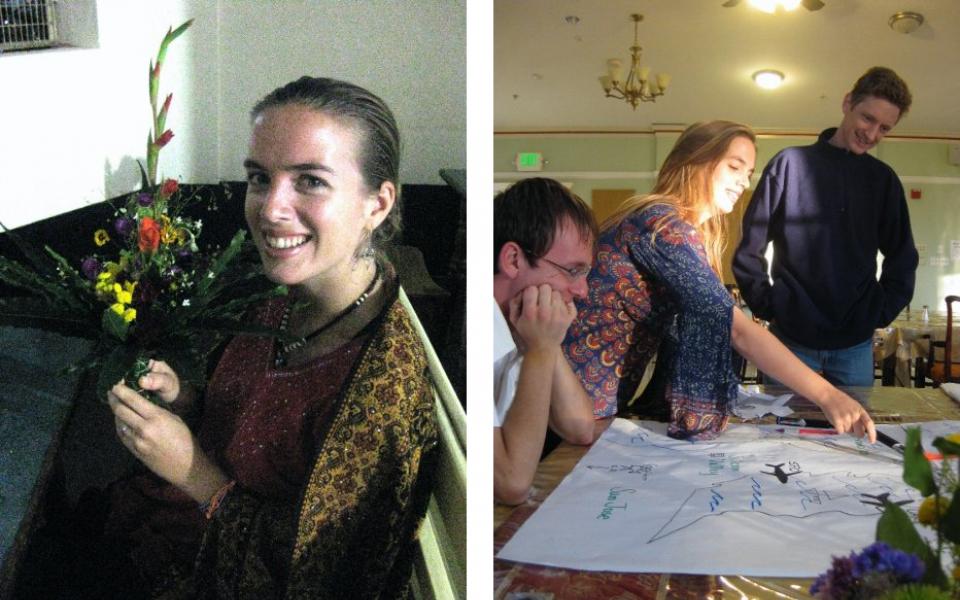
Principles to Sustain Life – Principles to Sustain URI
An ongoing question in URI is how might URI’s organization learn from nature and operate accordingly? In 2010, Sarah Talcott, as Coordinator for URI’s Young Leaders Program, suggested that URI consider the Principles of Permaculture as a way to create conditions for leadership to flourish and make the system of URI run creatively and efficiently. Sarah challenges us to ask the question – how can we apply permaculture principles to URI?
More recently, Sarah has been involved with restorative justice work in local schools and lives in northern California with her young family.
"I believe that money and people are definitely needed to make the system run, but just as important are the strategies for how we choose to use resources for sustainable benefit throughout the system. We need to look at the principles that guide our choices. Which brings me to permaculture - no, it's not just a system of organic gardening; it is a philosophy for designing sustainable, efficient, life-giving systems! I offer these principles to you all to see how these might be considered in relation to the plan for URI's growth over the next few years." - Sarah Talcott
FROM http://permacultureprinciples.com: The 12 permaculture design principles are thinking tools that, when used together, allow us to creatively re-design our environment and our behavior in a world of less energy and resources. These principles are seen as universal, although the methods used to express them vary greatly according to the place and situation.
The 12 Permaculture Design Principles:
Observe and interact - By taking the time to engage with nature (or in this case the field of URI) we can design solutions that suit our particular situation. How can we learn more from the "growers" in URI?
Catch and store energy - By developing systems that collect resources when they are abundant, we can use them in times of need. What might this mean in relationship to URI and fund development?
Obtain a yield - Ensure that you are getting truly useful rewards as part of the work that you are doing. I see this relating to evaluation and impact!
Apply self-regulation and accept feedback - We need to discourage inappropriate activity to ensure that systems continue to function well.
Use and value renewable resources and sources - Make the best use of nature's abundance to reduce consumptive behavior and dependence on non-renewable resources.
Produce no waste - By valuing and making use of all the resources that are available to us, nothing goes to waste.
Design from patterns to details- By stepping back, we can observe patterns in nature and society. These can form the backbones of our designs, with the details filled in as we go.
Integrate rather than segregate - By putting the right things in the right places, the relationships develop between those things and they work together to support each other. I think this has tremendous significance for leadership development. How do we cross-fertilize, and thus energize, the different streams of leadership in the organization through their interaction?
Use small and slow solutions - Small and slow systems are easier to maintain than big ones, making better use of local resources and producing more sustainable outcomes.
Use and value diversity - Diversity reduces vulnerability to a wide variety of threats, and takes advantage of the unique nature of the environment in which it resides. This supports the idea of decentralized, locally relevant leadership.
Use edges and value the marginal - The interface between things is where the most interesting events take place, these are often the most valuable, diverse and productive elements in the system.